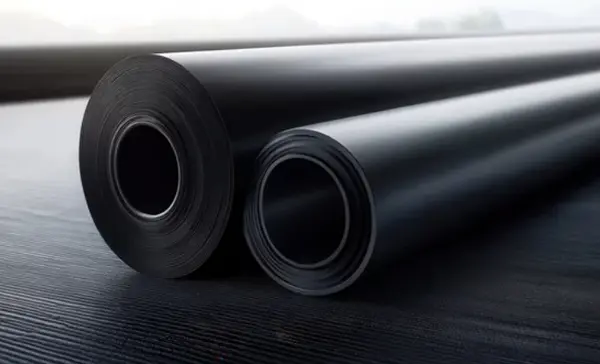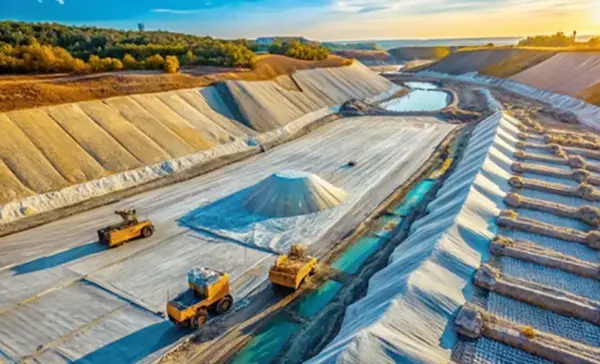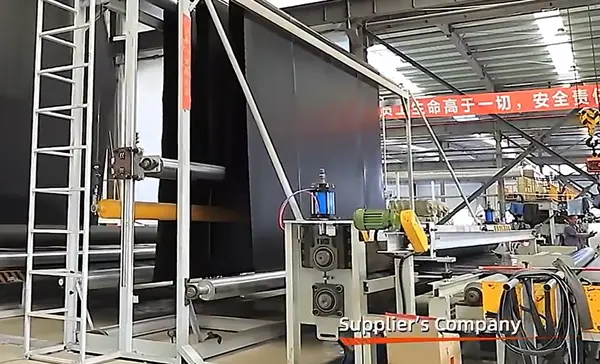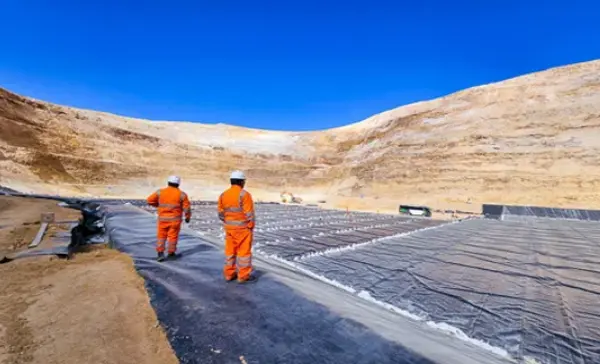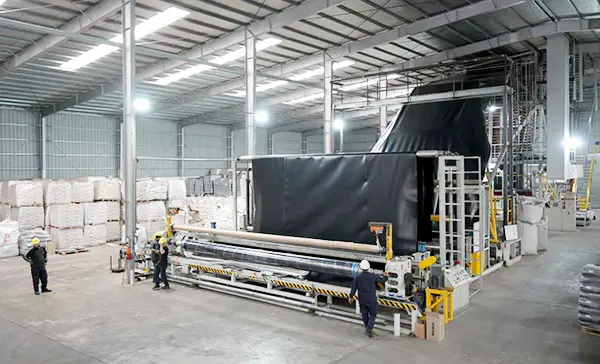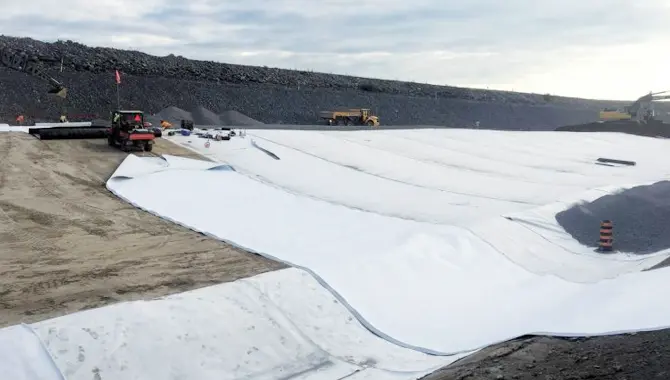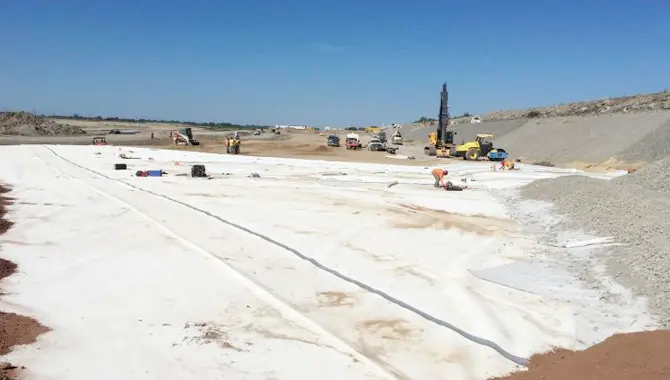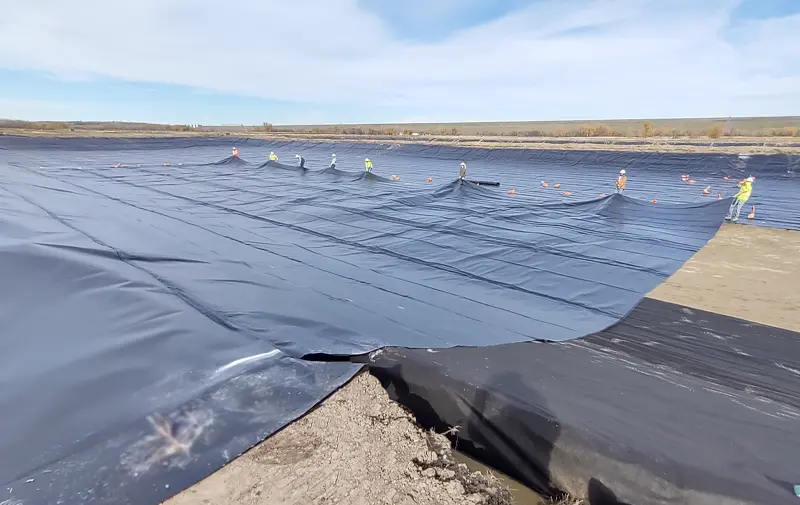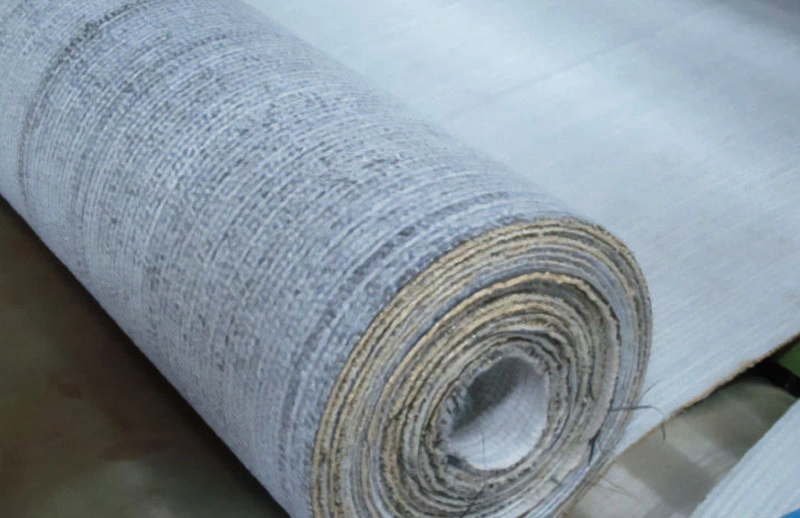
Geosynthetic Clay Liner Bentonite Blanket
Specification: Geosynthetic Clay Liner
Specification: GCL4000gsm,GCL4500gsm,GCL5000gsm
Size:5.8*30m/Roll and customized
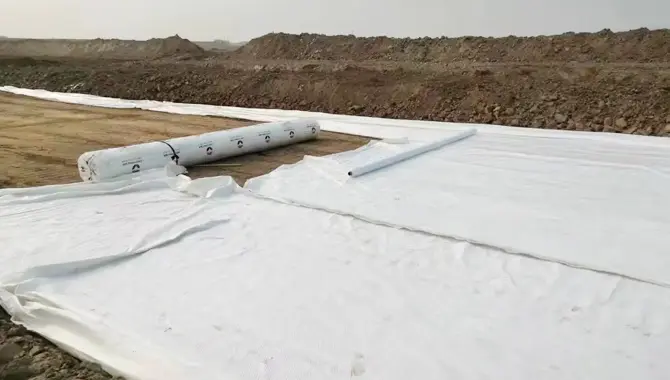
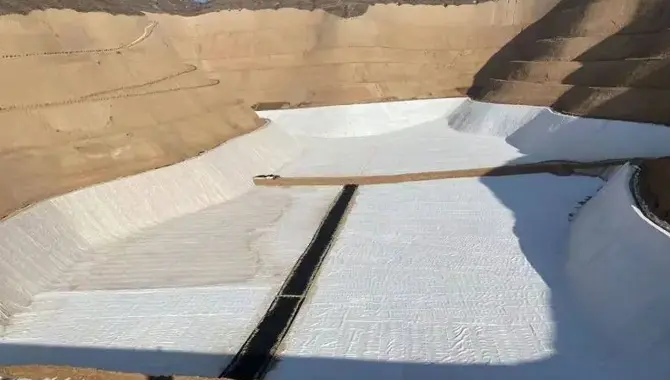
|
Properties |
Unit |
Test Method |
Frequency |
Value |
|
GCL Property |
||||
|
Bentonite mass per unit area |
g/m2 |
ASTM D 5993 |
4000m2 |
3600g/m2 MARV |
|
Tensile Strength |
kN/m |
ASTM D 6768 |
4000m2 |
6kN/m MARV |
|
Peel Strength |
N |
ASTM D 4632 |
4000m2 |
65N MARV |
|
Hydraulic conductivity |
cm/s |
ASTM D 5887 |
periodically |
5 × 10– 1 1m/sMARV |
|
Shear Strength |
kPa |
ASTM D 6243 |
periodically |
24 kPa Typical |
|
Geotextitle Property |
||||
|
Cap nonwoven geotextile |
g/m2 |
ASTM D 5261 |
20,000m2 |
200 g/m2 MARV |
|
Cap woven geotextile |
g/m2 |
ASTM D 5261 |
20,000m2 |
120 g/m2 MARV |
|
Bentonite property |
||||
|
Swell index |
Kg |
ASTM D 5890 |
50,000Kg |
24ml/2g MARV |
|
Moisture content |
% |
ASTM D 4643 |
50,000Kg |
12% max |
|
Fluid loss |
ml |
ASTM D 5891 |
50,000Kg |
18ml max |
|
Roll Dimensions |
||||
|
Width* Length |
m |
Typical |
each roll |
5.8 ×30 |
|
Area Per Roll |
m2 |
Typical |
each roll |
174 |
|
Packaged Weight |
kg |
Typical |
each roll |
935 |
|
20GP loading |
roll |
Typical |
each roll |
20 |

Geosynthetic Clay Liners (GCL) find applications in various engineering and environmental protection projects due to their impermeable and sealing properties. Here are some common applications of GCL:
1, Landfills: GCL are widely used as bottom liners and caps in landfills to prevent the leaching of contaminants into the soil and groundwater. They contribute to the environmental protection and containment of waste materials.
2, Artificial Lakes and Ponds: GCL are used to line the bottoms and sides of artificial lakes and ponds, providing a waterproof barrier that helps retain water and prevent seepage.
3, Water Containment and Reservoirs: GCL are employed in the construction of water containment structures, such as reservoirs and dams, to create impermeable barriers that prevent water from escaping.
4, Mining Applications: GCL are used in mining operations to line tailings ponds and storage facilities, preventing the release of potentially harmful substances into the surrounding environment.
5, Oil and Gas Industry: GCL are applied in the construction of containment structures for oil depots, chemical storage yards, and other facilities in the oil and gas industry to prevent leakage of hazardous substances.
6, Wastewater Treatment: GCL can be employed in wastewater treatment facilities to line lagoons and containment structures, preventing the seepage of treated or untreated wastewater into the surrounding soil.
The versatility and effectiveness of GCL make them valuable in a wide range of applications where impermeability and containment are critical considerations. The specific application depends on the project requirements and the environmental conditions of the site.
Performance features
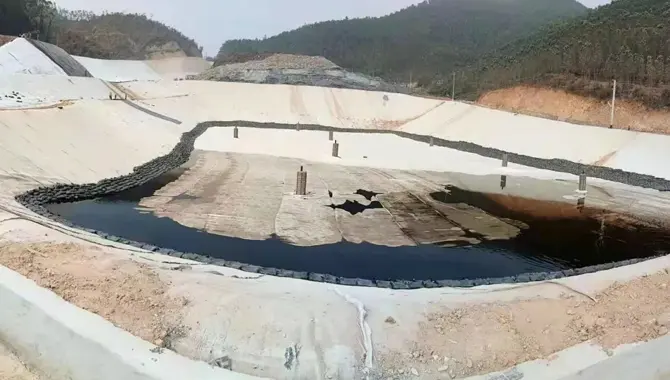
1, Impermeability: GCL provide excellent impermeability due to the swelling nature of sodium bentonite, forming a tight waterproof barrier when in contact with water.
2, Sealing Capability: The ability of GCL to swell and form a colloidal waterproof layer enhances their sealing capability, preventing water from permeating through the liner.
3, Flexibility: GCL are flexible and conform to the contours of the underlying surface, making them suitable for different shapes and profiles in various construction projects.
4, Chemical Resistance: GCLs exhibit resistance to a wide range of chemicals, making them suitable for applications in environments with different types of contaminants.
5, Ease of Installation: The installation process of GCLs is relatively simple compared to traditional clay liners. This can result in cost savings and faster project completion.

